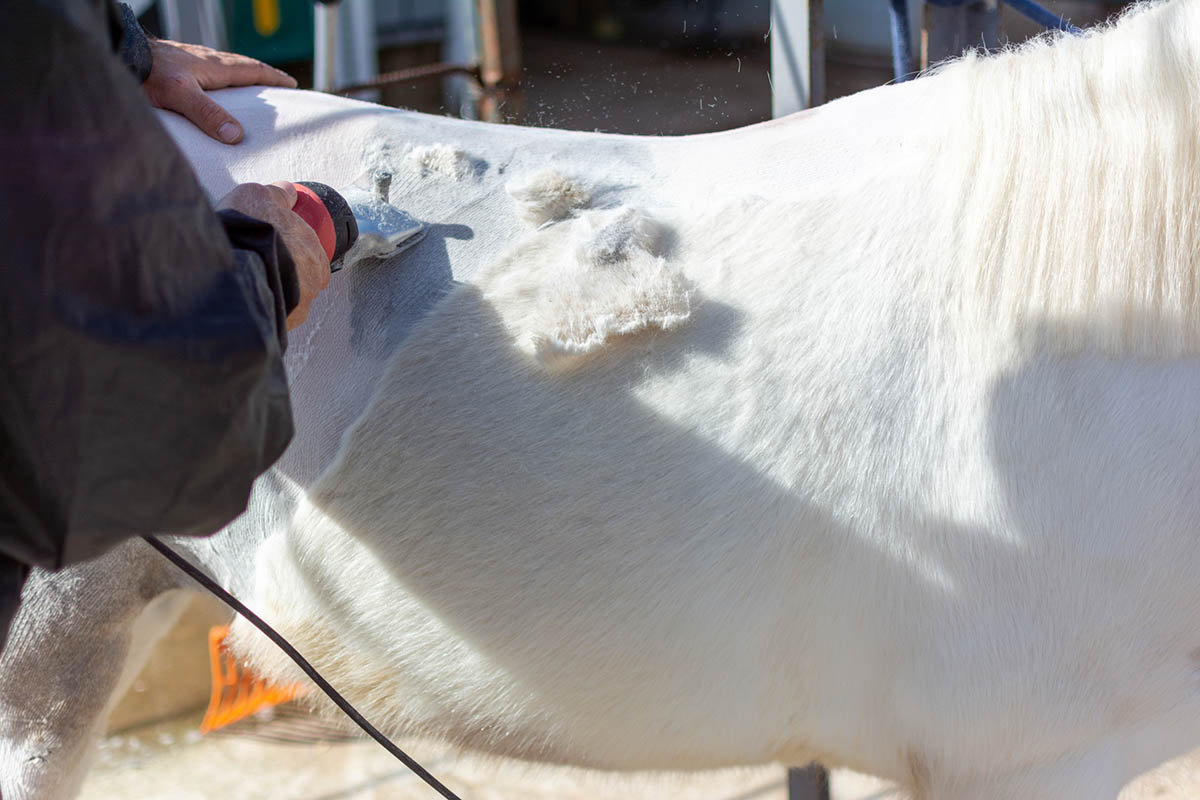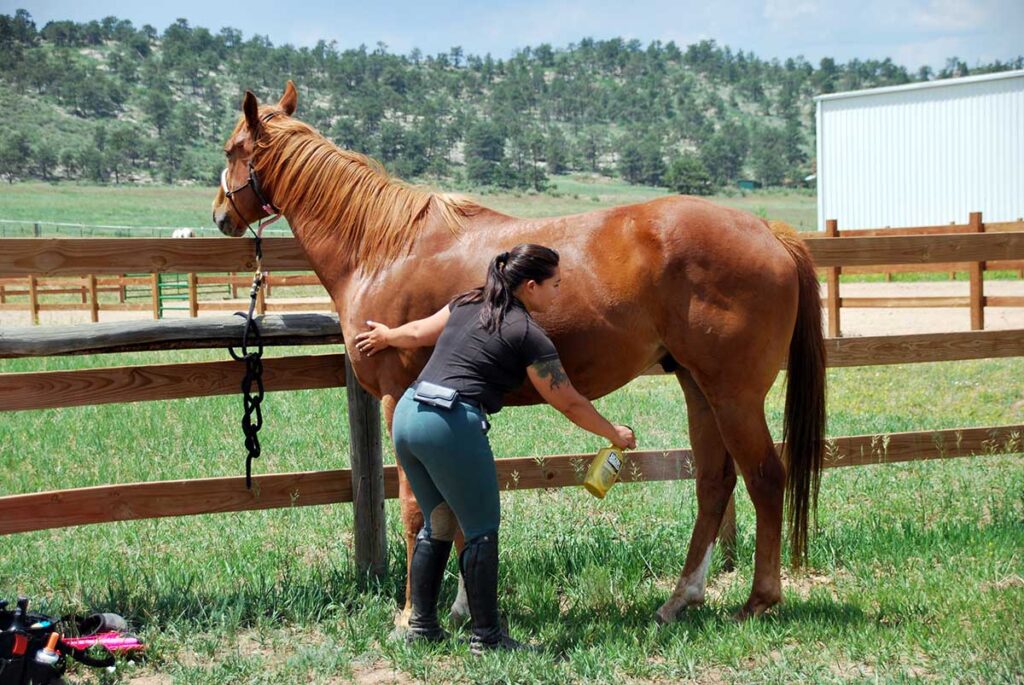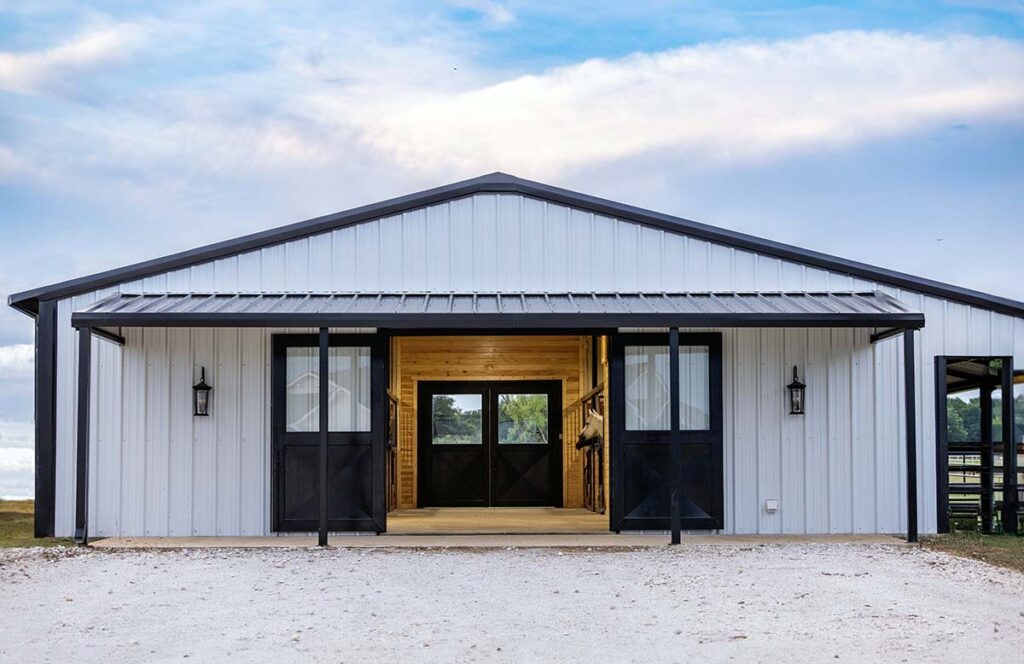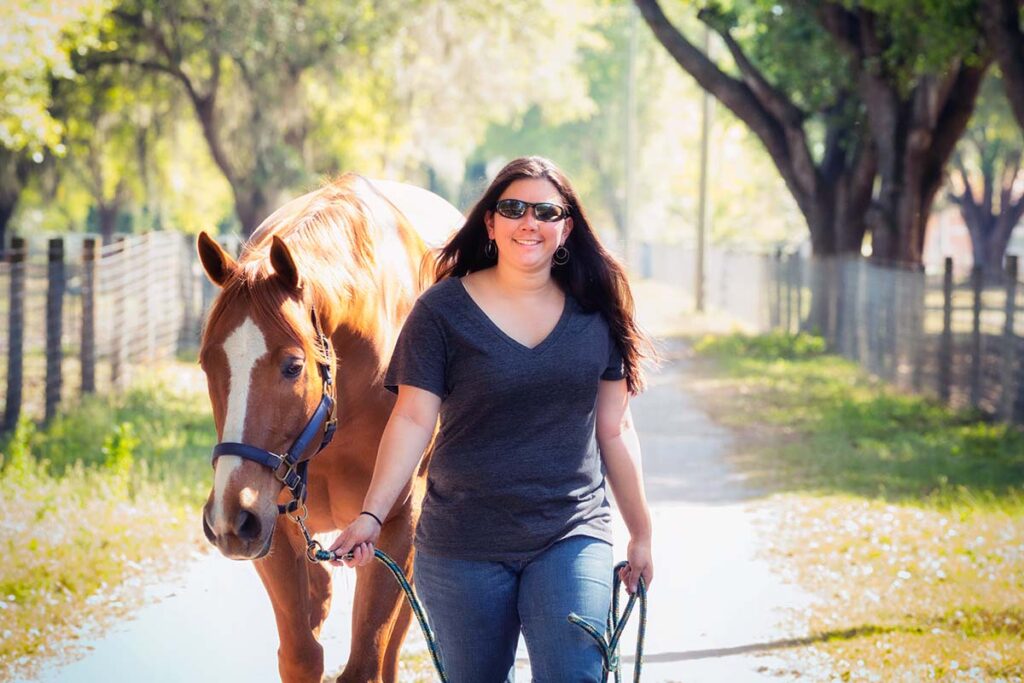Come winter, you might notice your horse is hairy, hot, and sweaty during workouts. For this reason, some owners choose to body-clip their horses’ hair coats. By removing that extra hair, you can cut down on cooling and drying time and help your horse stay more comfortable when exercising. (Note, however, that if your horse is on full turnout and rarely works up a sweat, it’s probably best not to clip his coat.)
In this article, we’ll review how to body clip a horse, plus common coat patterns and steps to a successful clip.
Popular Types of Horse Clipping Patterns
Trace Clip: For a horse turned out during the day and ridden to a sweat about twice a week, a trace clip may be the best option. This style of clip has many variations, but all involve clipping hair on the neck, chest, and other sweat-prone areas. But because the rest of the horse’s coat will be left alone, he can still be turned out without a blanket.
Hunter Clip: If you keep your horse on pasture but work him heavily more than three days a week, consider a hunter or blanket clip. With these styles, the entire body is trimmed except the face, legs and back. The unclipped hair on his back provides extra protection between his skin and the saddle. The long hair on the face and legs shields the horse against prickly bushes and undergrowth. Horses with this type of clip will most likely need to be blanketed when turned out.
Full-Body Clip: Horses kept in a barn and ridden almost every day may benefit the most from a full-body clip, in which the neck, trunk and hindquarters are trimmed. Sometimes the face is clipped as well. They will typically, however, need to be fitted with a cooler after exercise to prevent a chill and blanketed around the clock.
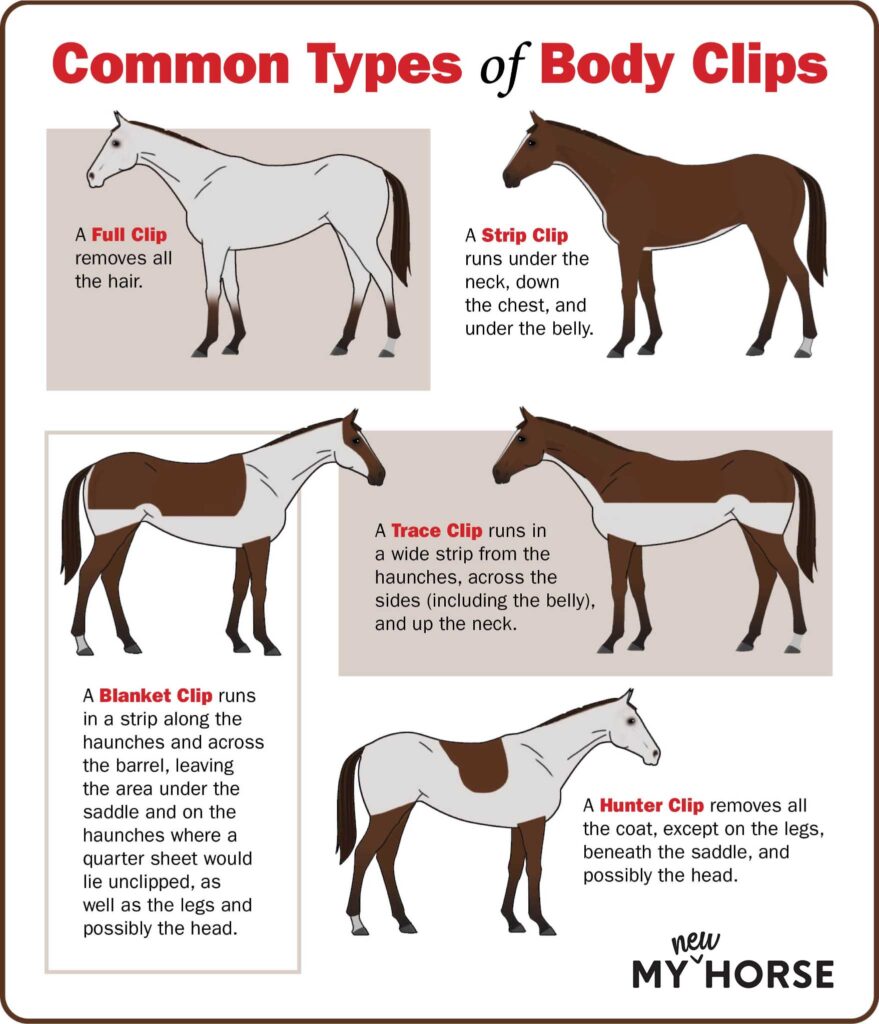
Getting Started
Full-body clipping might seem daunting, but with the right tools and a bit of know-how, you can master it. For starters, you’ll need a set of heavy-duty clippers for the bulk of the job and trimmers or light-use clippers for more delicate areas, such as your horse’s face and ears. Pro Tip: Avoid using the small clippers on the whole body, as the motor will wear out quickly.
Have clipper lubricant and/or blade wash on hand to keep the blades running smoothly and prevent overheating. Use a small brush or toothbrush to clean any hair or dirt from the blade teeth and small parts of the clippers. Other helpful body-clipping items include:
- A blanket or cooler to keep your horse warm.
- White chalk for marking guidelines.
- A tail wrap.
- A body brush.
- Clean rags.
- A step stool.
- A heavy-duty extension cord.
Before you start, read the clipper instructions for guidance on oiling and lubrication. Add a drop of oil (most large clippers have a small hole in the front for adding oil), and apply a thin line of oil to the top of the teeth, letting the clippers run for a few seconds. Repeat this step every 20 minutes while clipping. About every five minutes, brush the clipper teeth, and spray them with lubricant or dip them in blade wash. For instructions on changing clipper tension and conducting blade maintenance, read the manufacturer’s manual.
How To Body Clip a Horse, Step by Step
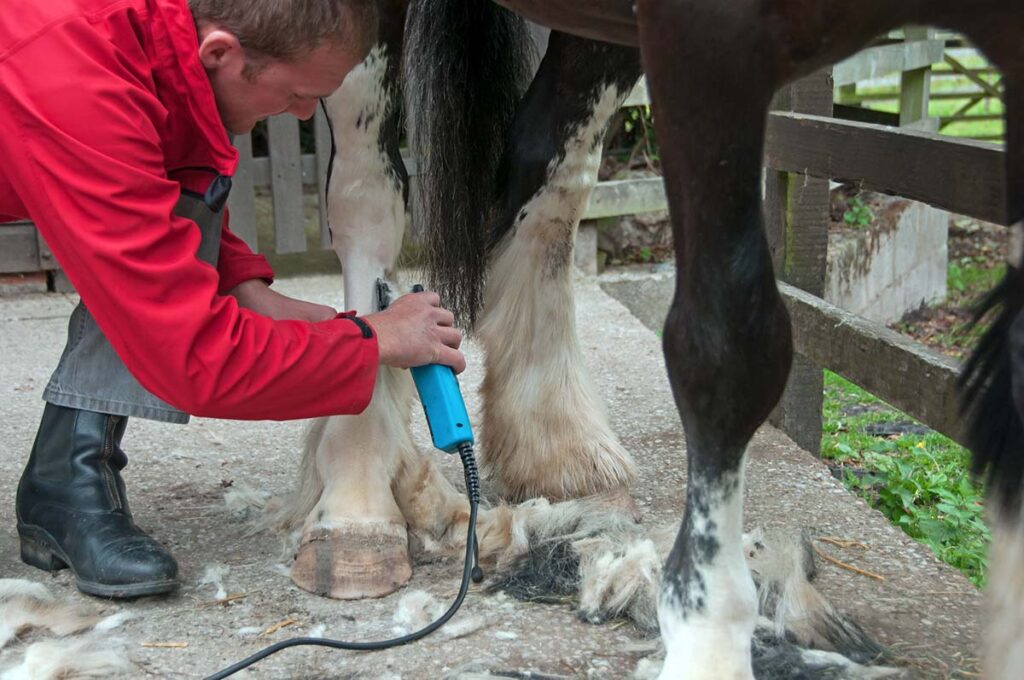
Take the nerves and guesswork out of body-clipping by following these steps:
- Start with a clean horse to avoid dulling the blades and overheating the motor.
- If you’re not doing a full body clip, draw chalk lines around the areas you want to leave au natural. A string or measuring tape can help you draw equal patches on both sides of the horse. Consider leaving a patch of hair around the saddle area if your horse has sensitive skin.
- Start the clipping process at your horse’s shoulder. Large, muscled areas are easiest to clip and can help you get accustomed to using the clippers. Run the clippers against the grain of the hair in long strokes. Overlap your clipping strokes to avoid leaving unsightly strips of uncut hair behind. Continue clipping along your horse’s back, sides, and quarters.
- When you get to your horse’s tail, clip an inverted “V” at the dock. This helps the tail blend with the clipped coat. Wrap the dock of your horse’s tail in a bandage to avoid trimming off any tail hairs.
- Now for the legs, which can be challenging due to their bony conformation. Trim lightly and evenly against the growth of the hair, and make sure you’re always out of kicking range.
- When clipping looser skin, such as on your horse’s chest or belly, gently pull it taut with your hand as you clip. Again, don’t kneel or lean down in an area where your horse can kick!
- Use smaller, quieter clippers on your horse’s head, starting along the jaw or cheekbone and leaving smaller areas, such as the ears, muzzle (if you decide to trim this sensitive area), and eyes, for last. When clipping the outer ears, gently squeeze them closed and clip the hair poking from inside and around the base upward.
Take-Home Message
Body-clipping a horse takes practice. Take your time and don’t be discouraged if his coat doesn’t turn out perfect the first time. If your horse is clipper-shy, spend time getting him accustomed to their sound and feel instead of jumping right in. Give yourself the best chance of success by clipping in a calm and relaxed environment. Don’t be afraid to enlist help from an experienced horseperson or veterinarian. Remember: Your horse will now need various layers of blankets to stay warm in cold weather without his natural coat.
Podcast: Body Clipping Prep with World-Class Groom Emma Ford
Parts of this article originally ran on Equusmagazine.com.
Are you enjoying this content? Sign up for My New Horse’s FREE newsletter to get the latest horse owner info and fun facts delivered straight to your inbox!

